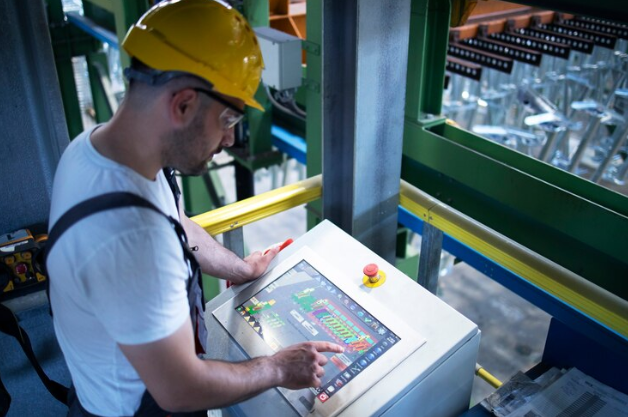In today’s fast-paced manufacturing world, maintaining high product quality while optimizing production efficiency is crucial for businesses to stay competitive. One technology that is transforming the way companies approach quality control is the Automated Visual Inspection (AVI) system. AVI systems use advanced machine learning algorithms, high-resolution cameras, and artificial intelligence (AI) to inspect products during production, providing real-time feedback and ensuring that only defect-free products reach the market. Here’s how automated visual inspection systems are reshaping product quality standards.
The Role of Automated Visual Inspection Systems in Manufacturing
Automated visual inspection has long been an integral part of the manufacturing process, but recent advancements have taken these systems to the next level. Unlike manual inspection, which is often time-consuming and prone to human error, AVI systems provide consistent, accurate, and efficient quality checks. By using cameras and sensors, AVI systems can detect minute defects or irregularities that may go unnoticed by human inspectors, such as scratches, dents, color mismatches, or misalignments. Learn more about the role of data analysis in various industries and how it connects to diverse sectors like forensic science and forex trading.
One of the main benefits of AVI systems is their ability to process a large volume of products quickly and accurately. The integration of AI algorithms allows these systems to “learn” from previous inspections, improving their ability to identify defects over time. As a result, AVI systems offer a level of precision that can elevate product quality standards beyond what was previously possible.
Improving Consistency and Reducing Errors
Traditional manual inspections are prone to variability due to factors like fatigue, distractions, or inconsistencies in human judgment. Automated visual inspection systems eliminate these issues by offering 24/7 inspection with consistent results. Whether inspecting thousands of units in a day or handling complex tasks, AVI systems ensure that each product meets the same high-quality standards without deviation.
With AVI, manufacturers can also conduct inspections at multiple stages of production—whether it’s the initial raw materials, during assembly, or post-production—ensuring quality control at every step. This capability dramatically reduces the risk of defective products reaching the consumer, boosting customer satisfaction and protecting a brand’s reputation.
Enhancing Efficiency and Productivity
In addition to improving product quality, automated visual inspection systems can significantly boost productivity. Because AVI systems operate faster and more efficiently than manual inspectors, they reduce the amount of time spent on quality control tasks. This increased efficiency leads to shorter production cycles, allowing manufacturers to produce more goods in less time.
Moreover, since AVI systems can perform continuous inspections without breaks, manufacturers can maintain a steady workflow without the need for frequent downtime or shift changes. As a result, businesses can achieve higher output while reducing labor costs and human error, all while maintaining a high standard of product quality.
Cost Savings and ROI
While the initial investment in an automated visual inspection system can be substantial, the long-term cost savings make it a smart choice for many manufacturers. By reducing the need for manual labor and minimizing the risk of costly defects, AVI systems offer a high return on investment (ROI). Businesses also benefit from reduced warranty claims and recalls, as the system helps ensure that only defect-free products are shipped to customers.
Additionally, AVI systems can help prevent production delays caused by quality control issues. With quicker and more accurate inspections, manufacturers can avoid costly production hold-ups, ensuring that deadlines are met and production runs smoothly.
Leveraging Data for Continuous Improvement
One of the most significant advantages of AVI systems is their ability to collect and analyze data in real time. By monitoring trends and patterns in the manufacturing process, companies can identify areas for improvement, optimize workflows, and reduce waste. This data-driven approach enables manufacturers to make informed decisions, refine production processes, and enhance overall quality control efforts.
The insights gained from automated visual inspection can be particularly valuable for predictive maintenance. By detecting patterns in machine performance or identifying recurring defects, AVI systems can help manufacturers predict when equipment might require maintenance or repairs. This proactive approach reduces unexpected downtime and ensures that production continues at peak efficiency.
Adapting to Complex Manufacturing Needs
The versatility of automated visual inspection systems allows them to adapt to various industries and manufacturing needs. Whether in electronics, automotive, food and beverage, or pharmaceuticals, AVI systems can be customized to meet the specific requirements of different products. For instance, in the electronics industry, AVI systems can inspect circuit boards for minute defects such as misaligned components or soldering issues. In the food industry, they can ensure that packaging is correctly sealed or that products meet hygiene standards.
Moreover, advancements in AI and deep learning have allowed AVI systems to detect increasingly complex defects. With the ability to identify subtle variations in texture, shape, and color, these systems can now ensure that products meet even the most stringent quality standards.
Future Outlook for Automated Visual Inspection Systems
As AI and machine learning technologies continue to evolve, the potential for automated visual inspection systems is vast. In the future, these systems will likely become even more sophisticated, with the ability to handle more complex inspections, predict potential issues with greater accuracy, and integrate seamlessly into the overall production process.
In addition, the growing adoption of Industry 4.0 principles—where machines, sensors, and data are interconnected—will further enhance the capabilities of AVI systems. These intelligent, interconnected systems will allow for real-time communication and adjustments to production processes, ensuring that quality control is always in sync with the needs of the business.
Conclusion
Automated visual inspection systems are playing a pivotal role in revolutionizing product quality standards in modern manufacturing. By providing precise, consistent, and efficient inspections, these systems help businesses reduce errors, enhance productivity, and deliver superior products to the market. With the ongoing advancements in AI and machine learning, AVI systems will only continue to evolve, offering manufacturers even greater levels of quality control and operational efficiency. For companies looking to stay competitive and meet the ever-growing demands of customers, investing in automated visual inspection technology is no longer just an option—it’s a necessity.
Sign up for our Daily newsletter
We'll be in your inbox every morning Monday-Saturday with all the day’s top business news, inspiring stories, best advice and reporting from Entrepreneur,


